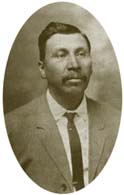
At the time of European contact, the Illinois, like all Native American groups, had a rich set of oral traditions that included many folk tales. These stories were told and retold in wigwams throughout the Illinois Country. They were important because they described the origins and beliefs of the Illinois people, they explained why nature looks and acts the way it does, and they reinforced moral guidelines for appropriate human behavior. They also provided entertainment on long winter evenings when everyone gathered around the hearth. Unfortunately, many of these tales were lost during the historic period when the Illinois suffered a drastic population decline and erosion of their cultural traditions. Some stories did survive, however, and were recorded in 1916 by Truman Michelson for the Illinois Centennial Commission.![]()
Rabbit and Possum. This tale recounts a struggle between Rabbit and Possum. It explains the origin of daylight and the shape of a rabbit's upper lip.
The Snake Husband. This is the story of a woman who falls in love with a handsome man who whistled at her in the woods. She marries him but later discovers that appearances can be deceiving.
The Painted Turtle. In this story, a turtle falls in love with a beautiful girl and strives to win her affection. The tale explains the origin of a women's name.
How Wisakatchekwa Got Into Some Trouble. Wisakatchekwa (wis-ah-KATCH-eh-kwah) was a cult hero in the folklore of several Algonquian-speaking tribes, including the Chippewa, Cree, Ottawa, Miami, and Peoria. Different tribes had different names for him. He was commonly identified as "The Great Hare," a mythological creature who was responsible for the origin of land and the creation of people. Wisakatchekwa was also an entertaining character who got into all kinds of trouble.
|
|
Copyright © 2000 Illinois State Museum
